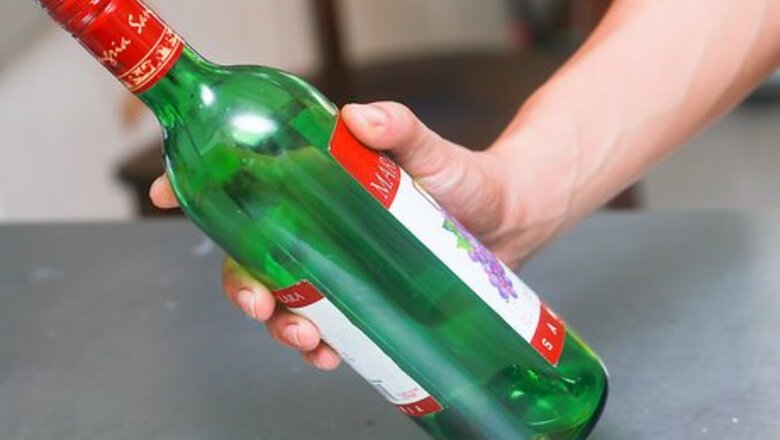
views
Getting the Right Equipment
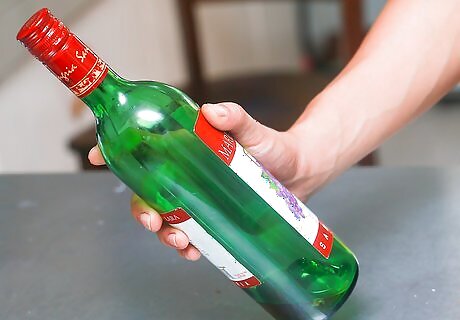
Determine the type of glass you want to drill. You can drill holes in wine bottles, aquariums, mirrors, glass tiles - basically all kinds of glass. However, the one major rule is that you should never drill a hole in tempered or safety glass. Tempered glass will shatter upon contact with the drill. To determine whether glass is tempered, look at the four corners of the glass. If the glass is tempered, the manufacturer is supposed to etch the glass at each of the corners. Another caution: When drilling, do not wear loose clothing or long, dangling accessories like necklaces, bracelets, and shirts with long fringes. It’s critical that you not wear anything that can be caught in a power tool. It’s also a good idea to wear protective goggles and gloves when drilling.
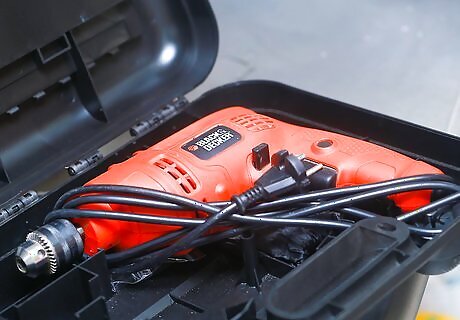
Buy or use a drill that you already have at home. If you have a power drill at home already, you can probably use that. Otherwise, you can buy a standard power drill at most home center stores. Drilling a hole in glass does not require a specific drill – it just requires the right drill bit. It’s important not to use the drill’s full power or top speed when you drill a hole in the glass, though. You could end up cracking the glass. Think about the drilling like you are slowly carving away at glass rather than drilling a hole in it. Locate the speed dial on your drill, and adjust it to a lower level. This will help you slow down the process.
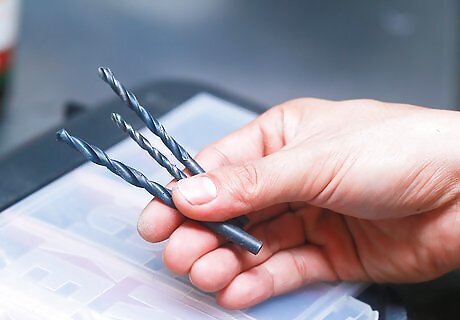
Choose the right drill bit. To drill a hole in glass requires having a drill bit that is specifically equipped to drill through glass. This is very important; you can't just choose any bit you have lying around. Ask at a local hardware store, as they will make sure you purchase the right one. Glass drill bits are pretty common, and you can also buy them online. One possibility is a carbide bit that is made for drilling glass and tile. Carbide bits have a spade shaped point and are also made to withstand the friction of drilling in glass or tile. You can find carbide bits at many home centers. Just go to the area where they sell drill bits or ask a salesperson. One issue with cheap bits, though, is that they can get dull fast or even break.
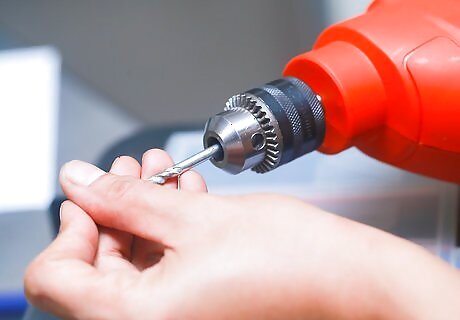
Use a diamond drill bit instead. These bits drill glass, sea glass, wine bottles, glass block and other harder materials like marble and stone. Diamond drill bits can be used to drill holes a quarter of an inch or larger. You can choose a rounded end or core bit. Diamond bits will create a smoother end product. Diamond bits are traditional for glass drilling; they will drill many holes with one bit and rarely cause breakage if properly used. For very small holes, you can choose a small diamond drill bit with a solid, flat end, or tip. These are available in very small sizes, as small as 0.75 mm. You could also purchase a diamond grit hole saw. You will need an autostart quick change mandrel tool. These pieces fit on your drill. Use the mandrel on your drill to create the first hole in the glass. Then, put the saw on the drill and place it into the hole you created with the mandrel. Drill the hole through.
Preparing to Drill
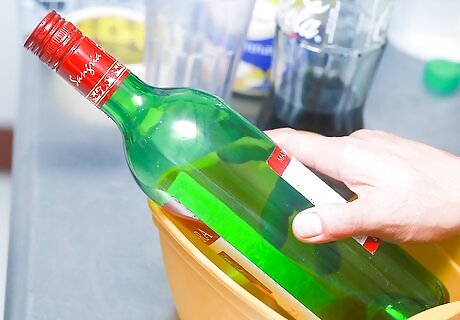
Place the glass in a small container, if it fits. You could use an ice cream tub or a plastic photographic tray. You don't want to drill through into a table or something like that. Put a bit of newspaper at the bottom of the container. This will prevent you from drilling a hole through the container itself. Another option is to place the glass on an extremely flat surface where it is completely supported. If you can, put a rubber pad or other firm, cushioning material underneath it, but the glass must be flat and supported. In other words, don't hold the glass up as you drill or something like that. At all times be cautious about safety. Make sure that you aren't drilling in an area where you could damage something, and you want to make sure that power tool cords are not near water. EXPERT TIP Bicycle Glass Bicycle Glass Glassblowing Experts Bicycle Glass Co. was founded in 2016 by David Royce and Michael Boyd, two professional glass experts. Bicycle Glass is primarily a lighting company, committed to quality, sustainability, and affordability. All Bicycle Glass products are made of high-quality, recycled glass and are hand-blown by a dedicated team of artisans. The studio is committed to reducing its carbon footprint by conserving energy in all of its production. Using renewable wind energy to offset all electricity usage, the studio is actively working toward the goal of carbon neutrality. Bicycle Glass believes that high-quality, handmade glass products should be within reach for everyone. Bicycle Glass Bicycle Glass Glassblowing Experts Always prioritize safety when working with glass. Make sure to wear proper protective gear and carefully handle the glass. This applies to all processes, including holding, cutting, or polishing. Follow safety protocols to prevent accidents and achieve successful outcomes.
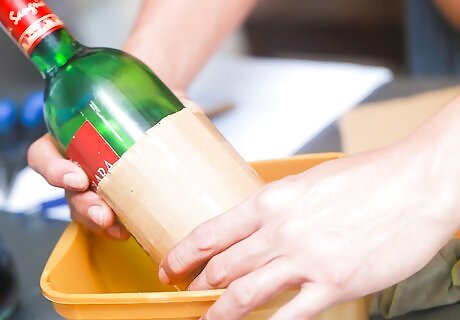
Tape a small piece of dense cardboard or tape to the glass. This will help prevent the bit from slipping as you start drilling. You could use cereal box cardboard for this purpose. Make a reference mark on the tape on the spot where you want to drill the hole. This will help guide you as you get ready to drill.
Drilling the Hole
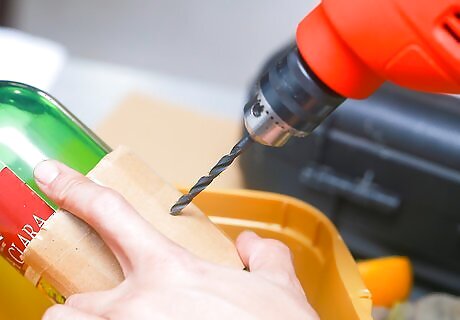
Start drilling at a very slow rpm. You want to drill slower when you are drilling into hard materials; you can find charts online that provide recommended drill speed for different materials, including glass. Chuck a small bit into a variable speed motor drill. Make sure it is secured tightly. It is best to start with a bit maybe about 1/8" or 3/32" in size. You only want to create a dimple in the glass at first. Then, remove the cardboard or tape and drill faster, at about 400 rpm. If you drill too fast, your drill bit could cause burn marks around the tip. If it seems necessary, swap in a larger bit to enlarge your initial hole. The first hole is a "pilot" hole. It will guide the subsequent larger bits as you work your way up to the size of your finished hole.
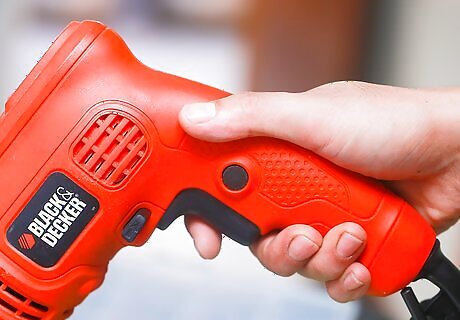
Lighten up the drilling pressure and speed even more so when the drill tip is close to breaking through the glass. When drilling glass, you should keep the drill at low or medium speeds. When you are close to breaking through, slow it down even more because this is when the glass can be the most fragile. If you press too hard on the glass with the drill, you could crack it. Hold the drill perpendicular to the glass so that you prevent chipping. You'll want to use lighter pressure if you're new to drilling to make it less likely you make a big mistake. Another approach is to drill half way through, flip the glass over (carefully) and drill through the back side of it until you meet the other hole in the middle.
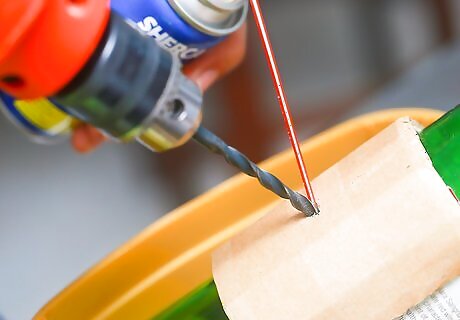
Use coolant so the drill bit doesn't get too hot. This is very important. Pour a little oil or water on the area that you are drilling. Water is the most common coolant used on drill bits. You will need to use more coolant if you are drilling a harder surface. The coolant will keep the drill bit or saw and glass lubricated and cool. If the glass gets too hot while drilling, it can crack and break. Coolant should be applied both before and during drilling. You could put a bottle with water in it and a small hole in it at the drill hole. It will trickle out and onto the hole as you drill the glass, cooling it. You could also spray a mist of water around the drill bit instead to keep it lubricated. Again, remember to be very careful of electrical cords and water. Try putting the water in a squirt bottle and apply it as you drill. If white powder forms as you drill, you should apply more coolant, and slow the process down. You could also place a wet sponge under the glass as you drill to act as a coolant.Or you could cover the glass with a small amount of water before drilling - basically put it in a shallow water bath in your container.




















Comments
0 comment